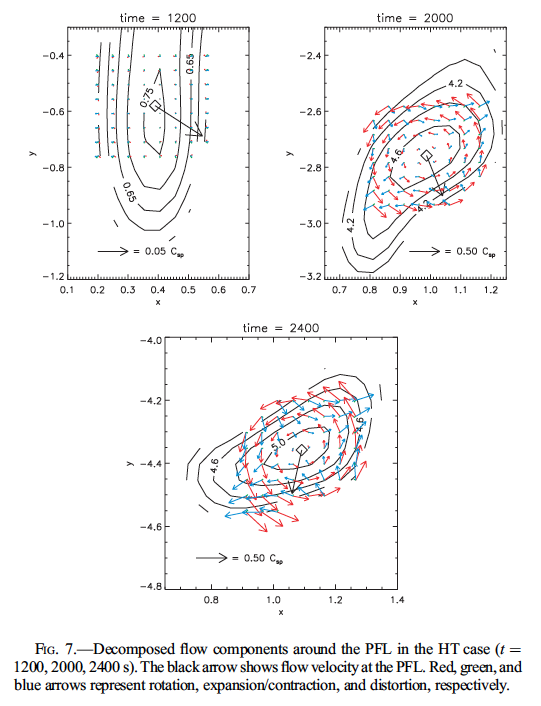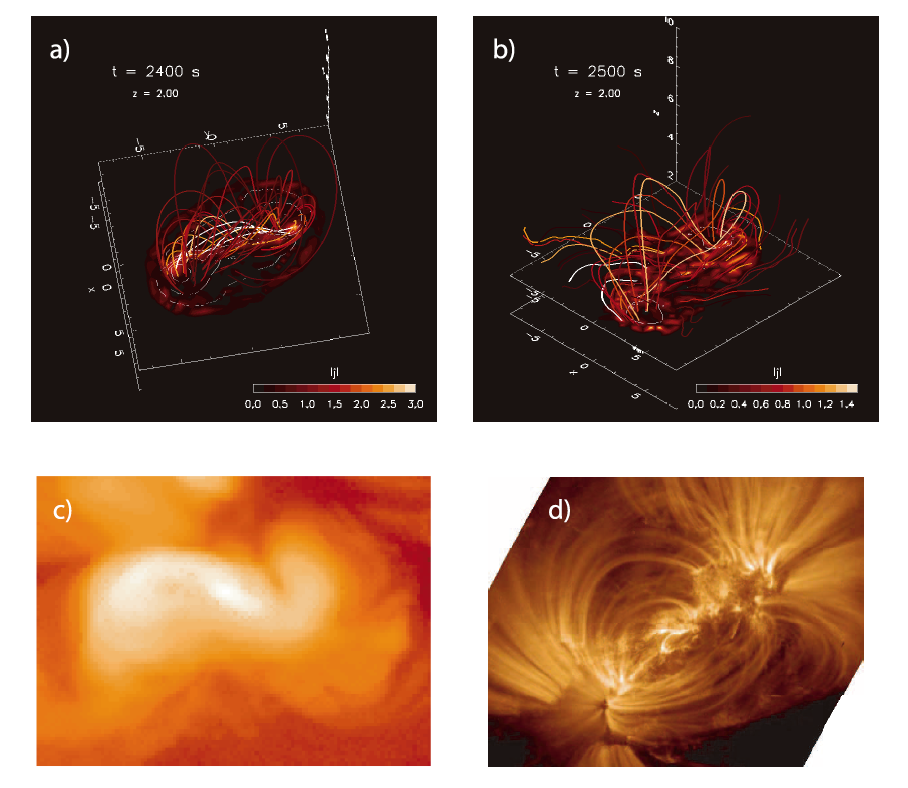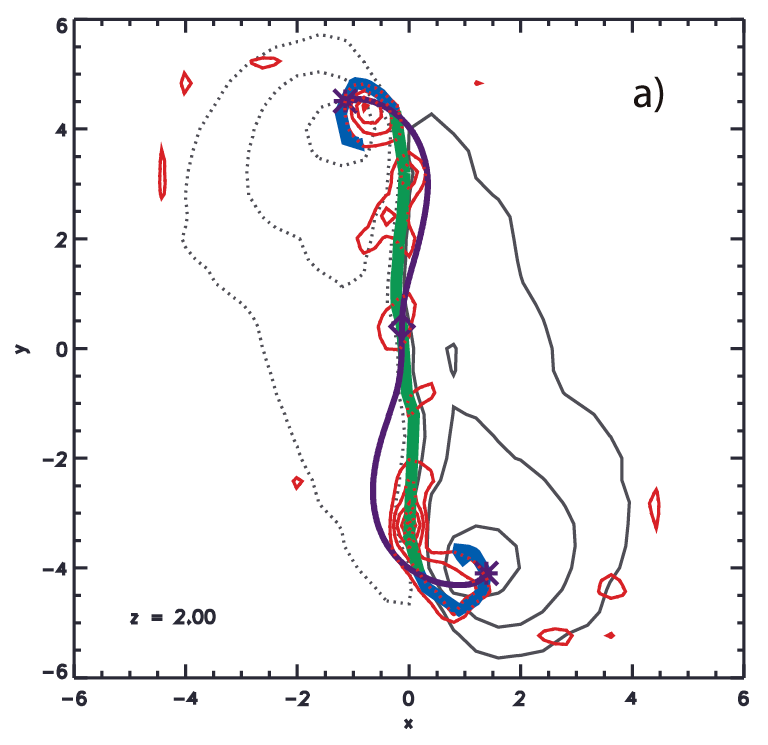

Figure 11: Topological features of magnetic structures produced by emerging flux tubes with different degrees of field-line twist.
(a) Snapshot of emerging field lines in the strongly twisted case. The color map shows the distribution of current density in a chromospheric plane, while contours on this plane represent vertical magnetic flux. Colors of field lines represent the strength of current density at their footpoints in this plane (bright
color indicates that high current density is distributed).
(b) Same as (a), but for the weakly twisted case.
(c) Soft X-ray image of sigmoid obtained by
Yohkoh.
(d) EUV image of potential field-like arcade obtained by TRACE.

Figure 12a: Distributions of current density (red contours) and vertical magnetic flux (gray contours; positive flux is shown by solid lines and negative flux dotted
lines) are presented for the strongly twisted case. These contours are plotted in the same chromospheric plane as that presented in Figure 11a. The thick green curve was obtained by connecting
bald patches (BPs) (BP curve), while the thin violet line shows the field line passing through one of the BPs (BP field line). The diamond and asterisks indicate the locations of the BP
and footpoints of this BP field line, respectively. The thick blue curves were obtained by connecting footpoints of BP field lines (BP footpoint curves). High current density tends to be distributed along the BP curve and BP footpoint curves.
This shows multiple BP field lines.


